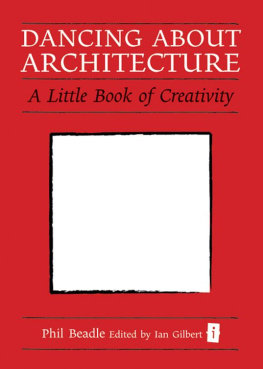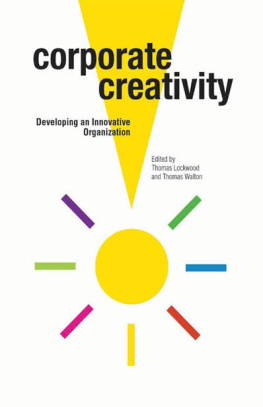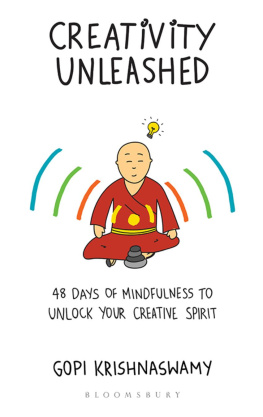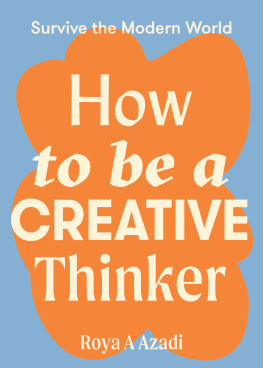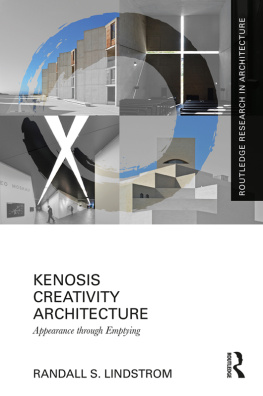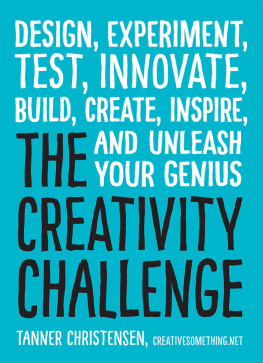DESIGNS IN THIS BOOK HAVE BEEN SEEN ON:
HGTV TINY HOUSE BIG LIVING | SEASON 1 EPISODE 14
ARCHITIZER A+ AWARD WINNER 2016
DWELL ONLINE 2016
COSMOPOLITAN ONLINE 2016
MODERN IN DENVER MARCH 2013
ARCHDAILY MULTIPLE OCCASIONS
LUXURY HOME QUARTERLY FALL 2011
B1 MAGAZINE FALL 2013
The above listed companies are not to be construed as providing their endorsement of the designs or content of this book.
PRAISE FOR THE CREATIVITY CODE:
Whether Im talking to Fortune 500 CEOs or Silicon Valley startup founders, they are all saying that innovation and creativity are the things they want most from their workforce. In this day and age creativity is the must-have skill that will propel anyones career regardless of their profession. The Creativity Code, teaches you specific concepts that drive creativity, uses real world examples, and provides a hands on guide to make sure you can apply it.
KEVIN KRUSE, NEW YORK TIMES BESTSELLING AUTHOR
The creative process can be challenging to teach, systematize, and study. For many of us the process of developing a concept, making it tangible, and narrating its story is extremely personal. In the Creativity Code, Alex Gore delicately introduce the complexities of the design process in a straight-forward, coherent, manner. A thought provoking read for the most veteran creatives to the beginners.
JEFFREY A. PINHEIRO, AIA : ARCHITECT STUDIO.BAD ARCHITECTS
From proportion and scale to sustainable chicken coop and a skyscraper that grows, Alex Gore and Lance Cayko take you on a wild journey through antiquity to the modern day in search of the key to creativity. Anyone wanting to unleash their maximum creativity would do well to study The Creativity Code.
ENOCH SEARS, AIA : ARCHITECT BUSINESS OF ARCHITECTURE
FOREWORD | THE POWER OF VISUAL THINKING

Why do we shout, I see! when we understand something?
Its an amazing fact that weve all but forgotten these days, but our brains are hard-wired to think in pictures. And when we harness the power of pictures in business, education and everyday life, we unleash a huge untapped creative power to innovate, communicate and problem solve.
Visual thinking is the process of organizing and processing information by seeing it, using pictures, cartoons, diagrams, colours, and maps. When information is presented visually, it takes on a new life; stories tell themselves, connections form, ideas meet and breed.
Its a powerful tool for businesses, because visual thinking makes the complex simple, communicating data and big ideas quickly.
Want to understand something? Draw it.
Since the earliest cave paintings, humans have told stories about the world in pictures. The ancient Egyptians used them to represent ideas. A drawing of an ox conveyed the essence of that animal efficiently. Children instinctively draw in the same way, using ideal forms think of the shorthand of stick figures.
These days we think of intelligence in terms of verbal and textual thinking, but some of the worlds great geniuses were visual thinkers Leonardo da Vinci an inventor and engineer as well as an artist used visual thinking to create new ideas. Albert Einstein, best known for a textual equation, once said he didnt think in words at all.
It was perceptual psychologist Rudolf Arnheim who realized we were all missing something crucial here. He coined the phrase visual thinking in 1969, arguing that art was our most natural thought process, a way of understanding the world.
And since Arnheim dragged visual thinking back into the spotlight, weve gradually been coming around to the idea that the best way to understand something might be to draw it.
Our sight is our fastest sense; a quarter of the brain is dedicated to processing visual information. And we remember things better if we see them. If you add visuals to text or audio, you increase retention in your audience by 40%. If you doodle when listening to verbal information, youll remember 29% more than if you dont.
How Visual Thinking Can Make Your Communications Mean More
Visual thinking is an incredibly powerful communications tool. In the information-dense world of today, governments, businesses, professionals and educators need ever more effective ways to engage their audiences.
Recent studies show that the secret to why some stories become massively popular online is due to the emotional response that the story elicits. And overwhelmingly, a positive emotional response results in far higher engagement and potential to be shared.
Other studies show that the combination of audio, written words and pictures stimulates the brain and vastly increases memory and understanding when compared to just listening or reading alone.
Visual thinking and visual communication can make audiences more engaged in what they are watching, help them better understand the messages delivered, make them feel positive and make them far more likely to share the information with others.
When people employ the techniques of visual thinking in their communication, it can literally make the invisible visible. It can be used for anything from communicating a Big Idea effectively to training a team with a new policy.
And visual thinking injects fun and wit into the working environment. If your communications are stifled by dry statistics and jargon, introducing a visual element can galvanize a room, or spread across a workplace community, unleashing creativity and insight you never knew was possible.
Visual thinking turns us into information explorers, wandering a landscape of data and ideas. We might see landmarks we hadnt noticed, come upon familiar sights from new angles, or stumble upon something beautiful as an unexpected view opens up before us.
By Oliver Prothero
Thanks to:
My parents, Keith and Sheri, the foundation of my life
My siblings, Wendy, Zach, and Corey
Grandma Graves, a shining star
Lance, this is your work as much as it is mine
The wonderful teachers at NDSU, and Century High School
The students at CU, Boulder who are an inspiration
And,
Anni, my always supportive and encouraging wife.
READERS GUIDE
This book builds sequentially up from a solid foundation. It is broken into three themed parts: Learn, Design, Live, with each part having three chapters.
In | Learn, you will discover the design principles and process that can unleash your inner Da Vinci. Here you will learn how to solve problems by finding the root causes, and understand the value of shaping the process.
| Design. provides examples to enhance your understanding of the principles and processes in the previous chapters. Ranging from small to large these examples prove that the creative process is capable of creating real world change, and shows the future path of architecture.
| Live, provides guides, checklist, and reveals the secret of design, and peels the lessons out of this book to applies them to your life through encouraging action!
The is not to be taken lightly; it is a course in design and sketching. It is the first step in truly transforming your ideas to reality.
While it is recommended to read this book in order, I understand the desire to bounce around and encourage a little creativity:). My favorite chapter is What if a building could grow? No. 6 (so either skip ahead or dont quit until you get there). Mixing design chapters between principles and process chapters can be a good way to get the creative juices flowing. While the book is written to be read in order, it only requires a little extra effort on your part to put the pieces together if you choose skip around.
Next page


